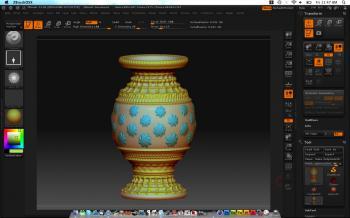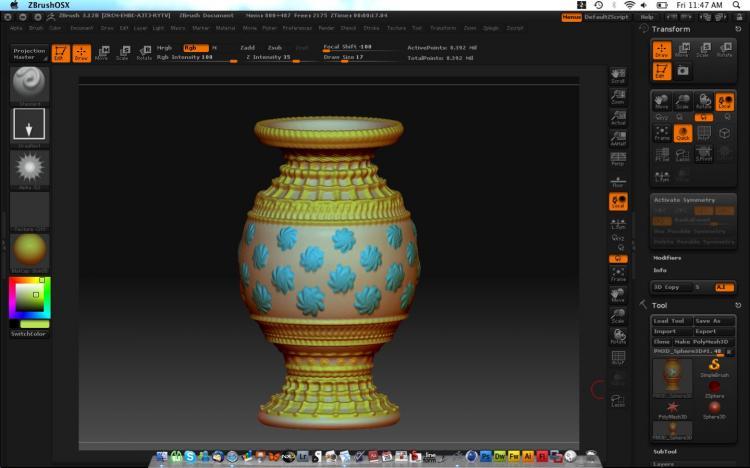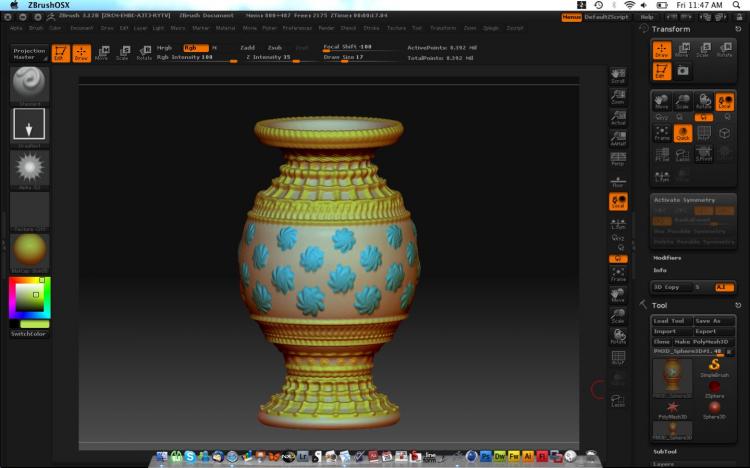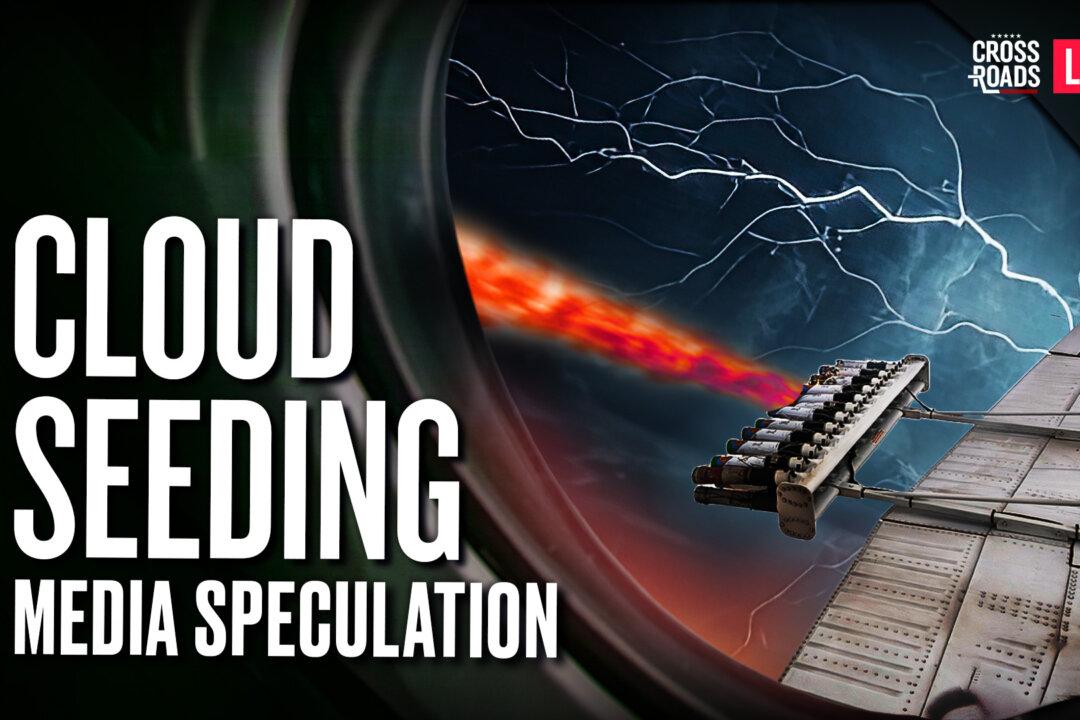I’ve always perceived 3-D graphics and animation as the art form most difficult to learn and create. Past experiences dabbling with such programs rarely lasted more than a few minutes—I would open the program, feel intimidated, and quickly close it down.
This perception has been changed by ZBrush.
The software, created by Pixologic, is a digital sculpting and painting tool made for the 3-D art community. It is often used in the film and video game industries and has big names under its belt, including the surface details of Davy Jones and his crew in “Pirates of the Caribbean: At World’s End,” and the upcoming sequel to the hit game, “Assassin’s Creed.”
ZBrush essentially allows you to sculpt digital clay. You can build, mold, push, and stretch it as you please. The end product can be photorealistic 3-D models of whatever your imagination can conjure.
They can then be saved as your own images, transferred to other software to be used for 3-D animation, or you can print them out on a 3-D printer (yes, they do exist).
Using ZBrush
I approached ZBrush expecting to spend days just learning the basic features. After launching the program, however, I found that notion terribly wrong. Right from the start, I was able to use many of the surface tools in the program.
ZBrush is surprisingly intuitive. The menus are easy to find your way around in, and many of the tools will be familiar to new users who’ve used software such as Photoshop or Illustrator—although from my own experience, ZBrush is easier to use than both of them.
It is recommended to use the software with a pen tablet. For this review, I used a simple Bamboo Wacom tablet connected to a MacBook Pro (ZBrush is also compatible with a PC).
When you first launch the software, a small menu comes up where you can load an existing image, start from a blank slate, or select a precreated model. Once you begin making and saving your own characters and objects, they will also appear as selections on the menu.
Wanting to jump right in, I selected a large 3-D orb. Along the left of the workspace you can select your brush, texture, and material. You can also select color and stroke there. Using these tools alone you can do a fair amount of work in ZBrush, although you’ll quickly graduate to the more advanced tools.
Inside the brush menu there are several options that determine how your pointer will place clay on your model. Thanks to the pictures associated with each brush, it’s fairly easy to tell which tool does what. The “Mallet Fist,” for example has a picture of a ball of clay with a dent pounded into it—I understood its use quickly.
The material menu lets you select what type of material your model will resemble. You can choose from a good range of them, including metals, skin shades, and glass.
The textures give realistic looking bumps, holes, scratches, and so on. With the textures you can put tiny pores on a face, or add a worn look to a piece of armor, which have a very convincing final effect.
A great feature in ZBrush is ZSpheres, which works as a digital armature for your model. You can build and customize the base of your model before you begin molding and sculpting the details. Once you finish the basic structure, you can then convert it to a “Mesh” and begin working on it as you would a normal piece.
This is fairly easy to use. Spheres can be enlarged, stretched, and connected as you please, which allow for the quick creation of some very intricate works.
A Helpful Hand
To make ZBrush accessible to a wider audience, Pixologic has a full list of tutorials on their Web site (www.pixologic.com). The company philosophy is that the tutorials should be free—to which a sea of fans are grateful. All the tutorials are easy to follow, even for those who have no background in creating 3-D models.
There is an over 80-minute video aimed at beginners that teaches the essentials of ZBrush. The videos were both interesting and valuable, and I finished all of them within a few hours. After my training I felt comfortable with a good range of features ZBrush has to offer.
With your basic training complete you can venture into the more advanced territory. One tutorial walks through the creation of a character that somewhat resembles a cartoonish Davy Jones, for example. Another teaches how to create architecture. And there are also several character-building tutorials that are coming soon—such as a model of Napoleon Crossing the Alps.
With the help of the tutorials I was able to construct a vase—which you can see in the photo. It turned out a lot better than my moon and failed humanoid—which are not pictured for my ego’s sake.
Even so, the program can do a lot, yet having a foundation in artistic ability will help to bring out its full potential. In the end, your imagination is the only limit to what you can create in ZBrush.
A Closer Look
Just to let the software flex its muscles a bit, ZBrush can divide a model into a billion polygons—HD quality. Of course, most users probably won’t need that, but it makes you feel good just knowing its there.
You can increase and decrease the polygon count of a model in ZBrush on the fly, which lets you create smooth, lifelike models. Also, thanks to some built-in features in the software, you can view high-res models without needing a high-end graphics card.
In addition to 3-D, ZBrush also offers the ability to paint and render in 2-D and 2.5-D, which is no less impressive. You can import your 3-D models to the 2.5-D workspace, where they can be resized, rotated, and positioned as you like. As you begin to paint and draw in the workspace, it will interact accordingly with other images you’ve currently made.
Since it’s not really 3-D you can, for example, place literally millions of buildings of varying sizes, change light effects, edit materials in objects, and so on, without having any additional slowdown from your computer.
There is also a free plug-in called PaintShop that works more like traditional painting software.
If you need to work between different 3-D software, such as Maya and Cinema 4D, you can download the free GoZ plug-in for ZBrush. This lets you quickly transfer your models back and forth between programs, while taking care of any compatibility issues for you.
A great addition to ZBrush is the online community at the Pixologic Web site. It adds a dash of life to the program that is great for fine-tuning your skills. On the discussion boards you can get tips from other users, share your art, ask questions, and so on.
There is also a “Challenges” section in the community, where you can create an image according to a specific category, which is great for practice. Some winners of the challenges landed jobs with top game developers. Some of the contests also have prizes.
In a Nutshell
My experience with ZBrush has been satisfying. After spending several weeks with it, I feel comfortable enough with many of the tools and feel confident enough to try creating some more intricate works.
Whether you plan to use it as a hobby or for your profession, the software is well worth a try. A free demo can be downloaded from Pixologic’s Web site, which I’d highly recommend downloading.
With the 2009 Siggraph conference recently coming to a close, several companies specializing in 3-D graphics and animation are releasing their new products. Look forward to reviews of these products in the coming weeks.
[etDetailsBox Report Card]
Effectiveness:A
Interface:A+
Usability:A+
Installation:A+
Overall:A
[/etDetailsBox]
Web site: www.pixologic.com
Price: $595.00




![[LIVE 4/26 at 10:30AM ET] New Push Started for Global Digital Currencies](/_next/image?url=https%3A%2F%2Fimg.theepochtimes.com%2Fassets%2Fuploads%2F2024%2F04%2F19%2Fid5633115-0426-1080x720.jpg&w=1200&q=75)



Friends Read Free